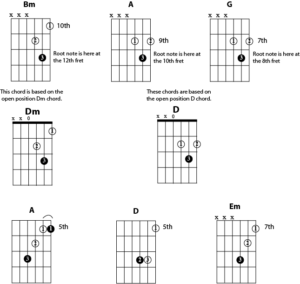“I didn’t have time to practice.” If I had a nickel for every time I’ve heard that I could probably retire. A common dilemma among music students both young and old, and in today’s society which is full of other distractions, it seems to be a growing trend. When investigating this dilemma, I usually find that it is not so much that one “doesn’t have time” as it is that one “doesn’t make time.” Unfortunately for most of us, practice is a necessary ritual that one must engage in to become proficient at playing guitar, or any other instrument.
Lets talk about what practice is. One definition if it is being used as a noun is “repeated exercise in or performance of an activity or skill so as to acquire or maintain proficiency in it.” If it is being used as a verb – “perform (an activity) or exercise (a skill) repeatedly or regularly in order to improve or maintain one’s proficiency.” Both definitions apply to us. Practice is not only necessary to acquire skill on an instrument but it also establishes a habit, a sense of responsibility, accountability to yourself, and self discipline. It is not only essential in gaining new skills, but also maintaining your existing ones. It not only helps with the brain part of learning, but also muscle memory. If you rehearse the same actions over and over again, properly, you will get better at it. Properly is the key here. The old saying “practice makes perfect” is not necessarily true. Practice makes permanent is really more appropriate. You definitely want to make sure you are working on your technique properly. Practice playing something incorrectly and you’ll get really good at playing it incorrectly. Practice playing it right, and you’ll get really good at playing correctly. It’s that simple. That is one of the benefits of having a good teacher. He or she can often help you avoid the bad habits and poor technique that can hold you back from being able to execute what it is that you are trying to play. That said, here are a few things I suggest to my students to help get them on track:
1. Have a designated spot to practice and make time to do it.
If you can walk into a room, sit down, and grab your guitar off a stand and play you will be more likely to pick it up regularly.
2. Practice for short periods of time a couple times a day.
In the beginning, you may not have a lot of stuff to work on. Try practicing for 15 minutes or so and then come back to it later in the day and do it again. The repetition and consistency of doing it this way will help more than marathon sessions. It will be much more productive to spend less time consistently that it will to skip a few days and try and make up for it in a 3 hour practice marathon. Even if you don’t have 15 minutes, anything helps. Just getting the instrument in your hands a couple times a day will make a big difference.
3. Break it up.
When I’m in “practice mode” I divide things up into different categories. Try it to give you some variety as well as a way to work on several things in one session, or better yet, do a couple at a time and then come back later in the day and do something different. Here’s what mine might look like:
Warm up
Scales and technique
Reading
Songs I need to work on for upcoming gigs or just maintenance
Eventually you will have your own list and you’ll know what you need to do.
4. Practice what you need to practice, but also practice what you like to practice.
Most often what we need the most work on ends up being what we like to practice the least. Trust me, it happens to all of us. What we’re not good at is usually not a whole lot of fun to work on. Forge ahead. Put your nose to the grindstone and get it done. When my oldest daughter was in middle school band they had a workshop with a band called the Dallas Brass. One of the guys in the band had the best analogy I’ve ever heard when it comes to playing an instrument and it will always stick with me – “The more you practice, the better you get. The better you get, the more fun it is to play.” It’s so true. Playing what you love and knowing that you put in the hard work to get you there is one of the most rewarding things that you can do. See the light at the end of the tunnel, it will be worth it. I promise.
With that said, take some time to reward yourself and play what you like to play for fun. Remember, this is hard work but it should always be fun.

